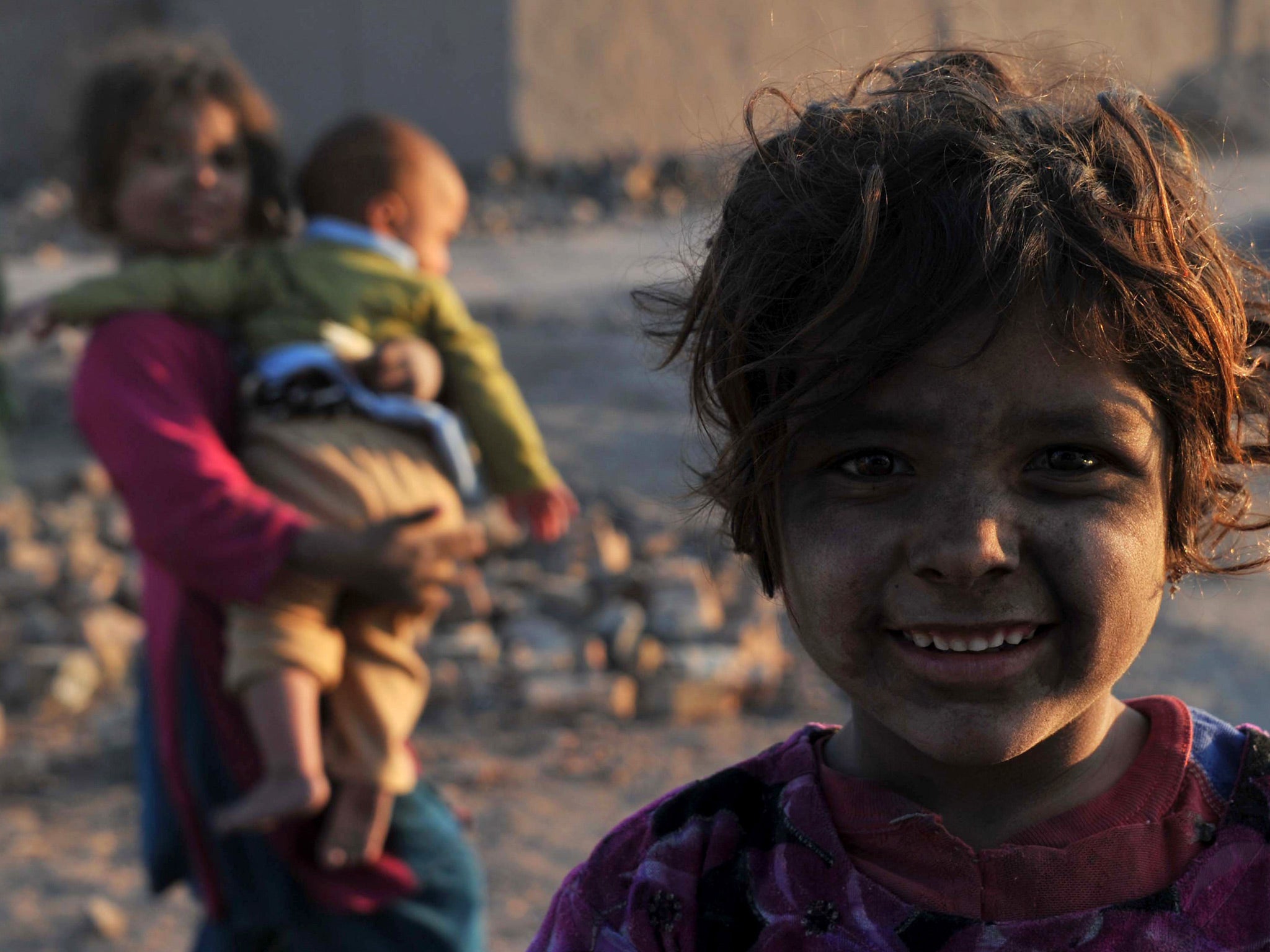More children dying in Afghan violence says UN, with death toll up 34 per cent

Your support helps us to tell the story
From reproductive rights to climate change to Big Tech, The Independent is on the ground when the story is developing. Whether it's investigating the financials of Elon Musk's pro-Trump PAC or producing our latest documentary, 'The A Word', which shines a light on the American women fighting for reproductive rights, we know how important it is to parse out the facts from the messaging.
At such a critical moment in US history, we need reporters on the ground. Your donation allows us to keep sending journalists to speak to both sides of the story.
The Independent is trusted by Americans across the entire political spectrum. And unlike many other quality news outlets, we choose not to lock Americans out of our reporting and analysis with paywalls. We believe quality journalism should be available to everyone, paid for by those who can afford it.
Your support makes all the difference.The number of children killed and wounded in Afghanistan's war jumped by 34 per cent last year as the Taliban stepped up attacks across the country and continued to lay thousands of roadside bombs, the United Nations said on Saturday.
Overall civilian casualties were up by 14 per cent, reversing 2012's downward trend and making 2013 one of the deadliest years of the 12-year war for civilians.
The rising civilian toll underscores mounting levels of violence in Afghanistan. Taliban insurgents have ramped up attacks to try to gain ground and shake the Afghan government's confidence as international combat troops prepare to complete their withdrawal at the end of the year.
The UN Assistance Mission for Afghanistan said in its annual report that 2,959 civilians were killed in the war last year — including 561 children — and that an overall total of 5,656 were wounded.
By comparison, there were 2,768 civilian deaths and 4,821 civilians wounded in 2012, and 3,133 deaths and 4,706 wounded in 2011.
UNAMA's report also noted an "alarming" new trend for 2013 — the increasing numbers of civilians being harmed in fighting between the Taliban and Afghan security forces.
The UN recorded a total of 962 battles in which civilians were harmed last year — an average rate of nearly 20 such battles every week — and said civilian casualties caused by such fighting rose by 43 percent over the previous year.
In terms of deaths and injuries, 2013 was also the worst year of the war for Afghan women and children, with most of the casualties caused by either stepping on or driving over roadside bombs or getting caught in fighting.
"It is the awful reality that most women and children were killed and injured in their daily lives — at home, on their way to school, working in the fields or traveling to a social event," said Georgette Gagnon, director of human rights for the UN mission, calling on all sides to work to protect civilians from harm.
UNAMA said 561 children were killed and 1,195 were wounded in 2013, a rise of 34 per cent in the combined number of casualties. Also last year, 235 women died and 511 were wounded, a rise of 36 percent in combined casualties. The breakdown for deaths and injuries in 2012 was not available.
The report blamed insurgents for 74 percent of the civilian casualties, saying that international law prohibits indiscriminate attacks and targeted assassinations of civilians. Afghan police and army were responsible for 8 percent of the casualties and international coalition forces for 3 percent, the report said, while 10 percent could not be blamed solely on either side and the responsibility for the remaining 5 percent was unknown.
The Taliban could not immediately be reached for comment, but in the past the insurgents have claimed their attacks were against legitimate targets — such as of pro-government religious leaders, tribal elders and election workers — who were working for their enemy, the Western-backed government.
The international military coalition condemned the insurgents' "continuing disregard" for human life.
"The Taliban continue to attack mosques and health care facilities, they target schools by burning them down, emplacing IEDs (roadside bombs) near them and occupying them for insurgent activities," the coalition said in a statement
According to the report, roadside bombs laid by pro-Taliban forces again caused most civilian casualties, accounting for 34 percent of deaths and injuries last year, while crossfire in battle accounted for 27 percent. Suicide attacks accounted for 15 percent of overall casualties, targeted attacks made up 14 percent and pro-government air raids were responsible for 2 percent. Unexploded ordnance detonations and "other" accounted for 4 percent each.
Insurgent attacks against Islamic clerics and mosques tripled to 27 during 2013, causing the deaths of 18 people.
The sum total of 8,615 deaths and injuries in 2013 was the highest number of combined casualties since the UN began documenting them in 2009 after a sharp rise in violence.
But the deadliest year of the war was 2011, when 3,133 civilians died as the Taliban launched a fierce pushback with roadside bombs and other attacks against the increased number of international forces who wrested back much of the territory controlled by the insurgents.
AP
Join our commenting forum
Join thought-provoking conversations, follow other Independent readers and see their replies
Comments